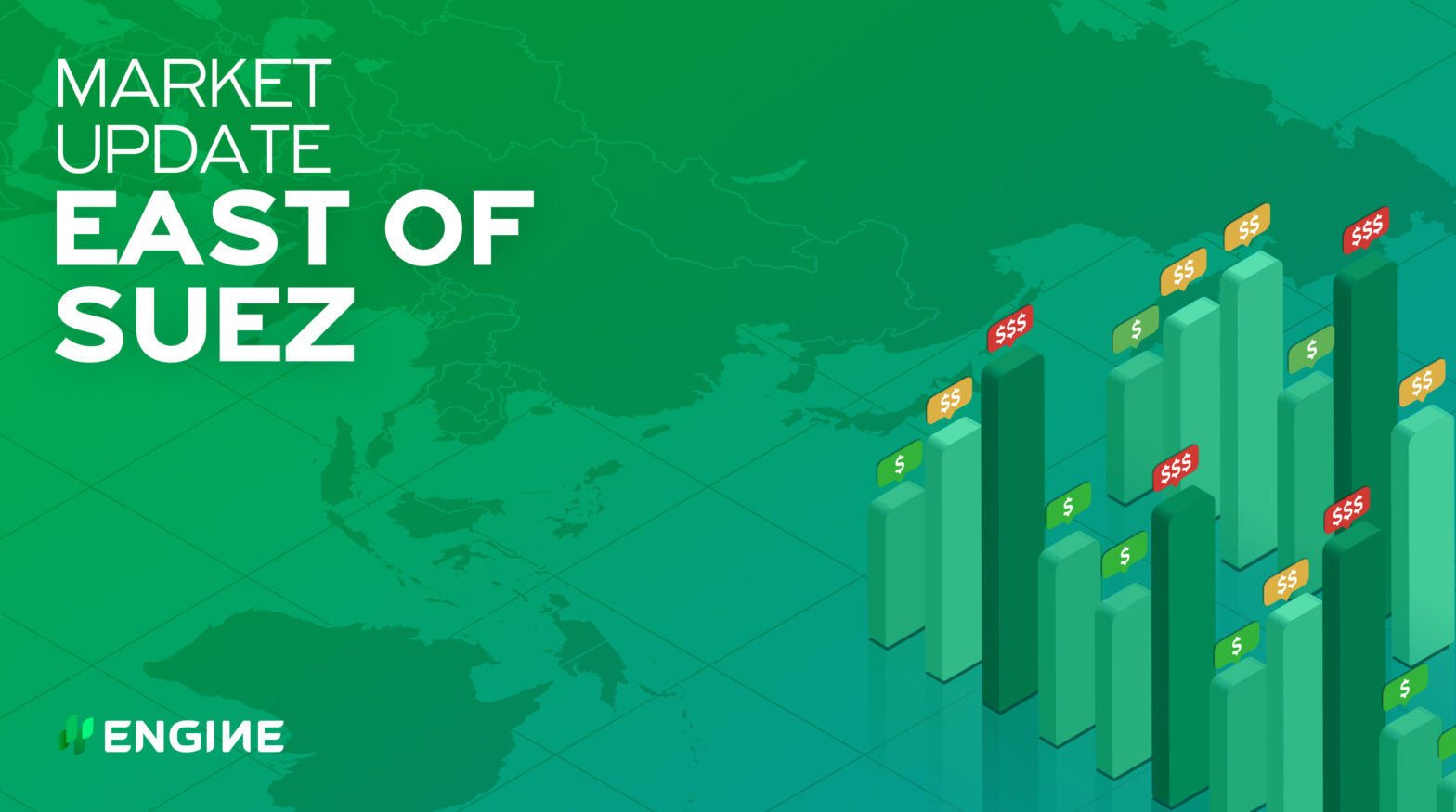East of Suez bunker prices are rising today, reversing some of yesterday’s sharp losses.
Changes on the day to 16.00 SGT (08.00 GMT) today:
- VLSFO prices up in Singapore ($5/mt), Zhoushan ($4/mt) and Fujairah ($3/mt)
- LSMGO prices up in Fujairah ($14/mt), Zhoushan ($7/mt) and down in Singapore ($5/mt)
- HSFO380 prices up in Zhoushan ($6/mt), Singapore ($3/mt) and Fujairah ($2/mt)
Singapore’s LSMGO price was the only price dropping today, brought down by a lower-priced stem for 150-500 mt of product.
Residual fuel oil stocks have edged up in Singapore in the past week, despite a drop in net imports, Enterprise Singapore data showed yesterday.
But since peaking at over 25 million bbls in May, Singapore’s fuel oil inventories have been drawn down. The port’s stocks have averaged 22.95 million bbls so far in July – their lowest monthly average since March.
Bunker fuel oils remain tight for prompt delivery dates in Singapore. 8-9 days of lead time are recommended for VLSFO and 10 days for HSFO380. LSMGO is available at a shorter notice of 4-6 days.
VLSFO prices have seen similar gains in Singapore and Zhoushan today, with the two ports standing at parity for a second day in a row.
Zhoushan remains well supplied for all three grades, with lead times at 2-3 days ahead.
Brent
ICE Brent September futures have slipped by $0.26/bbl on the day, to $73.41/bbl at 16.00 SGT (08.00 GMT).
Brent is on track for a weekly decline of nearly 3% amid the prospect of more OPEC+ oil in the market, signs of a dip in US fuel demand and rising Covid-19 cases in Europe and Asia.
A breakthrough in the impasse between Saudi Arabia and the UAE this week is expected to bring more oil to the market. OPEC+ negotiations stranded earlier this month when the UAE rejected the group’s output plan unless its baseline production level would be updated from October 2018.
Other OPEC+ members had voted in favour of easing production cuts by 2 million b/d in increments between August and December, and extend their output management pact from April next year to the end of that year.
The UAE is thought to have been given a concession for a baseline update and get behind the group’s output plan.
“More importantly to markets, though, is whether it will lead to a flurry of demands from other members for similar concessions, leading to the spectre of much higher volumes of oil hitting global markets as growth start to slow in parts of the world,” OANDA market analyst Jeffrey Halley said in a note today.
Growing US gasoline and distillate stocks has also weighed on Brent this week. Figures from the US Energy Information Administration (EIA) showed builds of 1 million bbls for gasoline and 3.7 million bbls for distillate fuels in the week ending 9 July, pointing to lower road and industrial fuel demand. Investors looked beyond another big crude stock draw to focus on a dip in refinery utilisation and weaker fuel demand.
